#Art Deco Society of Washington
Text
Deco Doings - September, 2022
Deco Doings – September, 2022

View On WordPress
#1939-1940 New York World&039;s Fair#Art Deco Society of California#Art Deco Society of New York#Art Deco Society of Washington#Auburn Cord Duesenberg Automobile Museum#Cincinnati Art Museum#Joseph Urban#Montreal#Nelson-Atkins Museum of Art#New York Adventure Club#New York Historical Society#Radio City Music Hall#Winold Reiss
10 notes
·
View notes
Photo

1910′s Cover of “The Club-Fellow & Washington Mirror, The National Journal of Society”. From Art Deco, FB.
205 notes
·
View notes
Photo

The Morris Goodkind Bridge spanning the Raritan River from Edison to New Brunswick.
Did you know the Eddie and The Cruisers story and the Soprano episode...
Connecting Edison on the North bank and New Brunswick on the South bank, two bridges tower over a river crossing that was favored by the Raritan Lenape native Americans. One bridge, a concrete arch structure built in 1929, was not enough. By the time it had been named the Morris Goodkind Bridge after its designer, traffic was so congested that a second bridge was needed. Up stepped Goodkind’s son Donald to design a parallel span, which opened in 1974. In 2004, the new bridge was re-named the Donald Goodkind Bridge. Where else in the world are you going to find that?
Donald was criticized for his “ordinary” concrete and steel design, but according to his family, he carefully aligned a narrow structure that would permit his father’s work to be seen as clearly as possible from the West and that would be mostly hidden from the East. The visual preeminence of the original bridge is evidence that Donald tried to pay homage to the 1929 span and avoid any one-upmanship. His father had won a medal for excellence in bridge design from the American Society of Civil Engineers for the 1929 bridge. Morris then became chief bridge engineer for the NJ highway department. The Pulaski Skyway is another of the spans built under his leadership.
150 years before the construction of the first bridge, George Washington celebrated the fourth of July, 1778 while encamped at the river. In 1834, the opening of the Delaware and Raritan Canal heightened the economic importance of New Brunswick and allowed central NJ access to new markets.
Both bridges have a tragic chapter in American pop culture. Eddie and the Cruisers star, Eddie Wilson was said to have drowned in the Raritan River when his ’57 Chevy Bel Air crashed through the concrete side rail of the bridge. In the 11th episode of The Sopranos (spoiler alert) Detective Vin Makazian commits suicide by jumping off of the Donald Goodkind Bridge.
If things keep up, commuters will be back to using one bridge with two lane of traffic in each direction. The nearly 100 year old span is in deplorable shape. Not only are the plaques commemorating Goodkind and the Lenape covered in graffiti, but the formed concrete rails are so deteriorated that a vespa could crash through parts of them at 15 mph! That’s not a nice way to treat such a majestic Art Deco span, is it?
0 notes
Text
Main Architectural Styles: From Classical to Sustainable
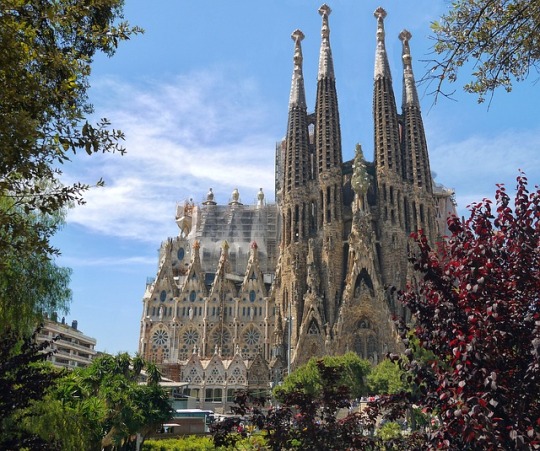
The History and Influence of Major Architectural Styles: Classical, Gothic, Renaissance, and Beyond

Architectural styles refer to the visual and aesthetic design elements that are characteristic of a particular period or place in history. These styles have evolved over time, reflecting the changing values, beliefs, and tastes of the societies that created them. Here is the list of the most influential and enduring architectural styles...
Classical Architecture
Colosseum
Classical architecture is characterized by its symmetry, proportion, and use of columns and other ornamental details. It originated in ancient Greece and Rome, and has had a lasting influence on Western architecture. Examples of classical architecture can be found all over the world, including the Parthenon in Athens, the Pantheon in Rome, and the White House in Washington D.C.
Gothic Architecture

Notre Dame
Gothic architecture is known for its pointed arches, ribbed vaults, and tall spires. It originated in 12th-century Europe and was popular during the medieval period. Gothic architecture is often associated with cathedrals and churches, such as Notre Dame in Paris and Westminster Abbey in London.
Renaissance Architectur
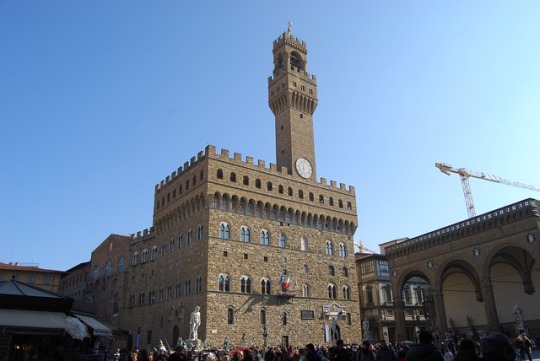
Palazzo della Signoria
Renaissance architecture is marked by its revival of classical forms and its emphasis on symmetry, balance, and proportion. It originated in 15th-century Italy and spread throughout Europe during the Renaissance period. Examples of Renaissance architecture include the Palazzo della Signoria in Florence and the Brandenburg Gate in Berlin.
Baroque Architecture
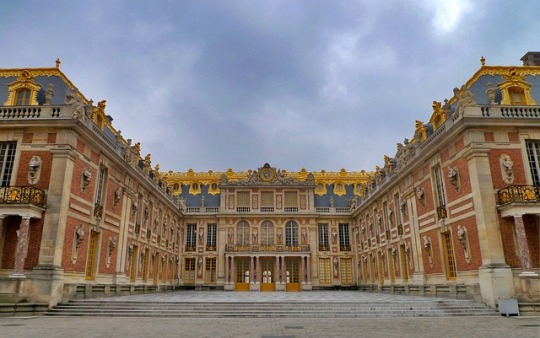
Palace of Versailles
Baroque architecture is characterized by its elaborate, ornate design, which often includes dramatic curves, sculptures, and frescoes. It originated in 17th-century Italy and spread throughout Europe during the Baroque period. Examples of Baroque architecture include the Palace of Versailles in France and the Taj Mahal in India.
Neoclassical Architecture
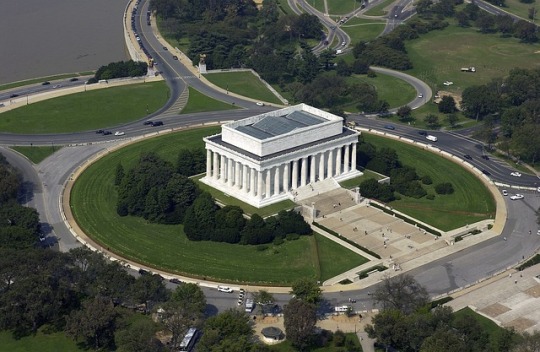
Lincoln Memorial
Neoclassical architecture is a revival of classical architecture that emerged in the 18th and 19th centuries. It is characterized by its symmetrical design and the use of columns, pediments, and other classical elements. Examples of Neoclassical architecture include the Lincoln Memorial in Washington D.C. and the British Museum in London.
Art Deco Architecture

Empire State Building
Art Deco architecture is characterized by its sleek, modernist design, which often includes geometric shapes, bold colors, and ornate details. It emerged in the 1920s and 1930s and was popular until the 1950s. Examples of Art Deco architecture include the Empire State Building in New York City and the Chapman Building in Los Angeles.
Modernist Architecture
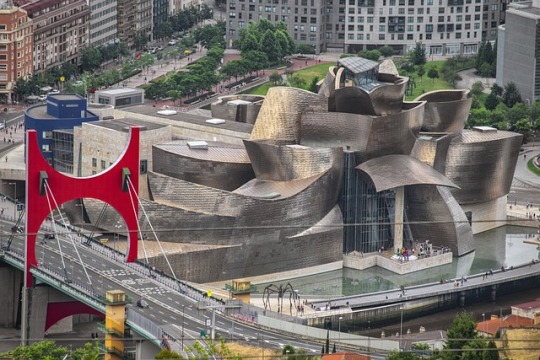
Guggenheim Museum
Modernist architecture is characterized by its emphasis on functionality, simplicity, and the use of new materials and technologies. It emerged in the 20th century and is still popular today. Examples of Modernist architecture include the Guggenheim Museum in Bilbao and the Sydney Opera House.
Sustainable Architecture

Bullitt Center
Sustainable architecture is a form of architecture that seeks to minimize the environmental impact of buildings while maximizing their energy efficiency and long-term sustainability. Examples of sustainable architecture include the Bullitt Center in Seattle, which is designed to be completely self-sustaining, and the Eden Project in Cornwall, which features a series of geodesic domes that are powered by renewable energy sources.
In conclusion, architectural styles have evolved over time, reflecting the changing values and tastes of the societies that created them. From the classical forms of ancient Greece and Rome, to the sleek and modernist designs of the 20th century, architecture has played a vital role in shaping the built environment and the way we live.
Read the full article
0 notes
Text
Art Deco Theatres
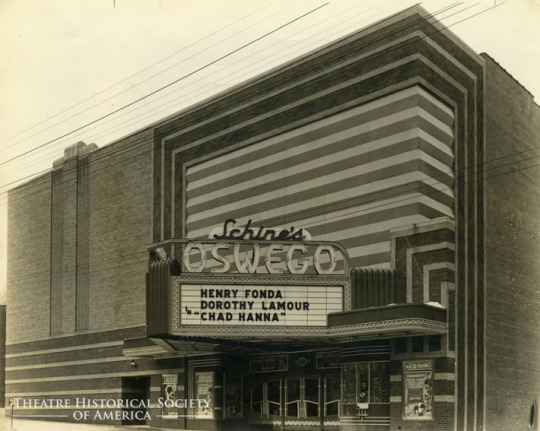
Theatre architecture in the 20s, other disciplines, embraced the clean and streamlined design that was Art Deco. This was a sea change from the palatial opulence of much of the early 20th century design that treated every surface as something to decorate.
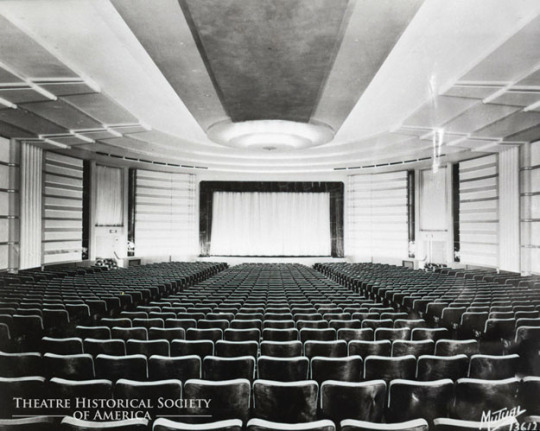
The following are excerpts from introduction to the 1989 THS annual “Glamour, Glitz and Sparkle: The Deco Theatres of John Eberson” by Richard Guy Wilson - Architecture Historian - University of Virginia.

“The term Art Deco has come to mean the attempt in the period between the two world wars to forge a new visual aesthetic, not only in architecture, but in the other design arts as well.”

“In the decades of the 20s and 30s, Americans were bombarded with the belief that a new age had come into being, a modern age controlled by machine and modern technology.”

“The full experience for many Americans came inside the new movie theatre...There one could really not just see, but feel the full kinetic impact, the physical and sensual three dimensions of modern design.”
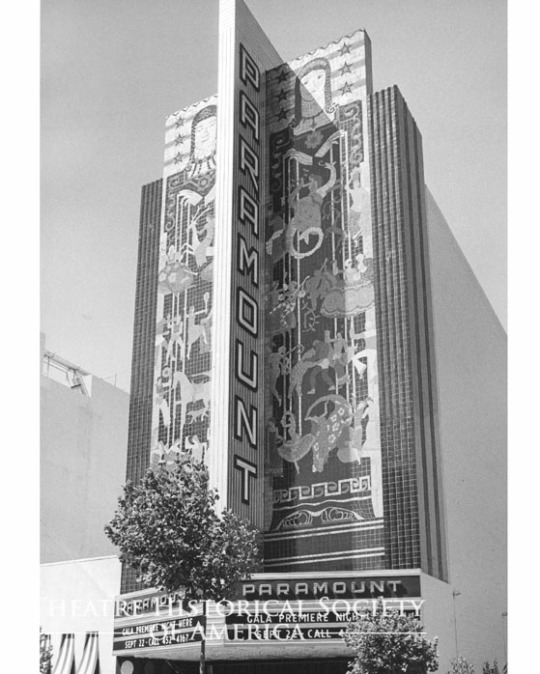
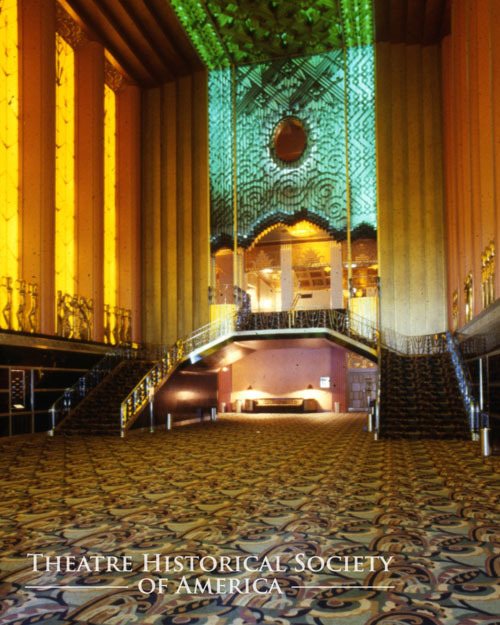
Photos of the Oswego Theatre in Oswego, NY
Lake Theatre in Oak Park, IL
Beverly theatre in Chicago, IL
Paramount Theatre in Aurora, IL
Penn Theatre in Washington D.C.
The last two are of the Paramount Theatre in Oakland, CA
#Theatre Historical Society#American Theatre Architecture Archive#architecture history#design#design history#theatre history#theater history#oswego#oak park#chicago#aurora#washington d.c.#oakland#paramount#penn#beverly#architecture#art deco#art
100 notes
·
View notes
Text
Avenue south residence brochure1
From the celebrity mansions lining Worth Avenue and private stretches of pristine Palm Beach, to the sultry tropical oasis of South Beach in Miami, South Florida has always been a prime destination for luxury and decadence. Rich in culture and history, Miami offers an escape to a world of palm trees, sea and sun with plenty of shopping, nightlife and golf hotels, to fill the hours between sessions on the sand.
Florida's coveted climate and much-deserved status of "The Sunshine State", draws golf enthusiasts from all over the world. Whether you're putting for business or pleasure, Miami has activities and historical sites enough to satisfy colleagues, co-eds and vacationing families alike. The streets buzz with the remnants of the city's Spanish origins and are lined with architectural curiosities ranging from turn-of-the-century elegance to bold, art deco fantasy. But most importantly, no matter where you go, pleasure is par for the course...
Where to Stay: Top Luxury Golf Hotels in Miami
Biltmore Hotel: Hotels once offered an experience of grandeur and old world elegance; they were once a Mecca of high society - a place to dress for dinner, to see and be seen throughout the social season. Conceived during the height of the roaring 20s, the Biltmore Hotel is an opulent tribute to these days gone by. Now a thriving resort, the Biltmore Avenue south residence brochure retains its grand appeal as well as a reputation as one of the most prestigious golf hotels in Miami.
Doral Golf Resort and Spa: Doral is a manicured haven of contemporary Florida resort culture. For a more modern experience, spend your vacation at this Marriott golf hotel set on 650 acres of lush, green lawns. With a full spa, nationally-acclaimed chefs and a range of shops, your only worry will be finding a reason to leave.
Beyond the Beach
Vizcaya Museum and Gardens: Vizcaya is a national historic landmark in the heart of Miami-Dade County. Built during the jazz age, this design and architectural masterpiece thrived when Miami was the playground of wealthy industrialists, who designed lavish estates ideal for entertaining. Sites open to the public include the richly furnished rooms of the house and Vizcaya Museum and ten acres of tropical gardens, featuring varied flora from common ferns to exotic orchids.
Espanola Way: After a day of sun, make your way to this charming pedestrian stretch between Washington and Drexel Avenues for an evening stroll. Free from corporate cafes and blaring club music, Espanola Way is a quaint corner of preserved architecture and independent shops and galleries. Wander under the sparkling lights strung between the storefronts and dine on sweet and savoury crepes in an authentic French bistro. Be sure to sit outside to catch a warm ocean breeze and admire the Mediterranean-style buildings of early 20th century beauty.
1 note
·
View note
Photo

May 1, 1931 - Empire State Building Dedicated
"On this day in 1931, President Herbert Hoover officially dedicates New York City’s Empire State Building, pressing a button from the White House that turns on the building’s lights. Hoover’s gesture, of course, was symbolic; while the president remained in Washington, D.C., someone else flicked the switches in New York.
The idea for the Empire State Building is said to have been born of a competition between Walter Chrysler of the Chrysler Corporation and John Jakob Raskob of General Motors, to see who could erect the taller building. Chrysler had already begun work on the famous Chrysler Building, the gleaming 1,046-foot skyscraper in midtown Manhattan. Not to be bested, Raskob assembled a group of well-known investors, including former New York Governor Alfred E. Smith. The group chose the architecture firm Shreve, Lamb and Harmon Associates to design the building. The Art-Deco plans, said to have been based in large part on the look of a pencil, were also builder-friendly: The entire building went up in just over a year, under budget (at $40 million) and well ahead of schedule. During certain periods of building, the frame grew an astonishing four-and-a-half stories a week.
At the time of its completion, the Empire State Building, at 102 stories and 1,250 feet high (1,454 feet to the top of the lightning rod), was the world’s tallest skyscraper. The Depression-era construction employed as many as 3,400 workers on any single day, most of whom received an excellent pay rate, especially given the economic conditions of the time. The new building imbued New York City with a deep sense of pride, desperately needed in the depths of the Great Depression, when many city residents were unemployed and prospects looked bleak. The grip of the Depression on New York’s economy was still evident a year later, however, when only 25 percent of the Empire State’s offices had been rented.
In 1972, the Empire State Building lost its title as world’s tallest building to New York’s World Trade Center, which itself was the tallest skyscraper for but a year. Today the honor belongs to Dubai’s Burj Khalifa tower, which soars 2,717 feet into the sky."
- History.com
This week in History:
April 28, 1789 - Mutiny on the HMS Bounty
April 29, 1854 - First African-American College Chartered
April 30, 1939 - New York World's Fair Opens
May 2, 1933 - Loch Ness Monster Sighted
May 3, 1986 - Willie Shoemaker Becomes Oldest Man to Win Kentucky Derby
May 4, 1865 - Lincoln is Buried in Springfield, Illinois
This advertisement for Venus Pencils referencing the Empire State Building can be found in the online collection of the Hoboken Historical Society.
#this day in history#history#empire state building#New York City#venus pencils#advertisements#museums#hoboken historical museum#Hoboken#PastPerfect#PastPerfect Online#museum collections
2 notes
·
View notes
Text
Week 6 - Architecture
This saturday while I was attending a wedding the ceremony was held at the Saint Frances Cabrini church in West Bend. Compared to other churches this one is quite unique. On the outside it looks like it could be just one giant spaceship with an odd shaped dome. The inside is also interesting. The inside part of the church that houses the altar is also circular. All around the room right before the walls meet the ceiling there are stained glass windows in a style that reminds me of Piet Mondrian composition artworks. Then the ceiling rises up into the dome structure that can be seen from the outside.

The place where the reception took place is also an interesting piece of architecture. It is known as the Chandelier Ballroom in Hartford. According to the Wisconsin Historical Society the architecture style is Art Deco. The outside of the building makes it appear smaller than it looks on the inside. The octagonal shape is characteristic of the geometrical Art Deco style. The interior is quite sleek with wood flooring and brick walls. The chandelier inside one of the ballrooms is also reflective of the Art Deco style as it is also quite geometrical.

The next building I would like to talk about is Holy Hill in Erin. According to the Wisconsin Historical Society the architecture style is Romanesque Revival. The architecture reflects that. In particular the roman arches over the doors and the arches over some of the windows. There are multiple stories and places for people from the church to stay. The towers are also interesting as they reflect the architecture style and people can go up into them to overlook the church and the land surrounding it though this has been closed for a while due to the pandemic.

Sources:
Wisconsin Historical Society, Wisconsin Architecture and History Inventory, "Holy Hill Monastery", "Erin", "Washington", "Wisconsin", "13846".
Wisconsin Historical Society, Wisconsin Architecture and History Inventory, "Schwartz Ballroom", "Hartford", "Washington", "State", "Reference Number".
0 notes
Text
YOUNG MATRONS’ LEAGUE PLAY
October 9, 1948
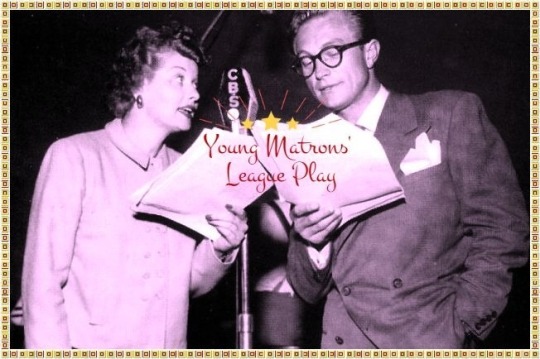
“Young Matron’s League Play” is episode #12 of the radio series MY FAVORITE HUSBAND broadcast on October 9, 1948.
Synopsis ~ George finds out that Liz is in the Young Matrons’ League play and finds a clever way to surprise her!
Note: This episode was aired before the characters names were changed from Cugat to Cooper. It was also before Jell-O came aboard to sponsor the show and before the regular cast featured Bea Benadaret and Gale Gordon as the Atterburys.
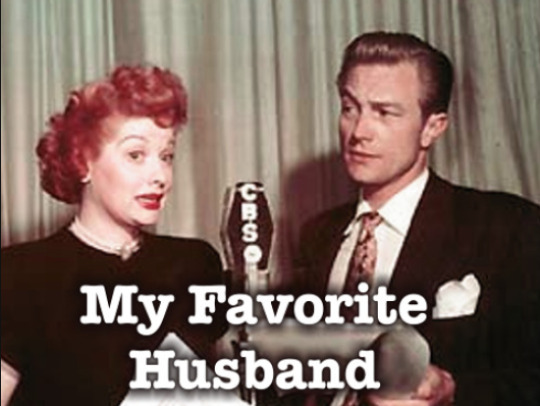
“My Favorite Husband” was based on the novels Mr. and Mrs. Cugat, the Record of a Happy Marriage (1940) and Outside Eden (1945) by Isabel Scott Rorick, which had previously been adapted into the film Are Husbands Necessary? (1942). “My Favorite Husband” was first broadcast as a one-time special on July 5, 1948. Lucille Ball and Lee Bowman played the characters of Liz and George Cugat, and a positive response to this broadcast convinced CBS to launch “My Favorite Husband” as a series. Bowman was not available Richard Denning was cast as George. On January 7, 1949, confusion with bandleader Xavier Cugat prompted a name change to Cooper. On this same episode Jell-O became its sponsor. A total of 124 episodes of the program aired from July 23, 1948 through March 31, 1951. After about ten episodes had been written, writers Fox and Davenport departed and three new writers took over – Bob Carroll, Jr., Madelyn Pugh, and head writer/producer Jess Oppenheimer. In March 1949 Gale Gordon took over the existing role of George’s boss, Rudolph Atterbury, and Bea Benaderet was added as his wife, Iris. CBS brought “My Favorite Husband” to television in 1953, starring Joan Caulfield and Barry Nelson as Liz and George Cooper. The television version ran two-and-a-half seasons, from September 1953 through December 1955, running concurrently with “I Love Lucy.” It was produced live at CBS Television City for most of its run, until switching to film for a truncated third season filmed (ironically) at Desilu and recasting Liz Cooper with Vanessa Brown.
MAIN CAST

Lucille Ball (Liz Cugat) was born on August 6, 1911 in Jamestown, New York. She began her screen career in 1933 and was known in Hollywood as ‘Queen of the B’s’ due to her many appearances in ‘B’ movies. “My Favorite Husband” eventually led to the creation of “I Love Lucy,” a television situation comedy in which she co-starred with her real-life husband, Latin bandleader Desi Arnaz. The program was phenomenally successful, allowing the couple to purchase what was once RKO Studios, re-naming it Desilu. When the show ended in 1960 (in an hour-long format known as “The Lucy-Desi Comedy Hour”) so did Lucy and Desi’s marriage. In 1962, hoping to keep Desilu financially solvent, Lucy returned to the sitcom format with “The Lucy Show,” which lasted six seasons. She followed that with a similar sitcom “Here’s Lucy” co-starring with her real-life children, Lucie and Desi Jr., as well as Gale Gordon, who had joined the cast of “The Lucy Show” during season two. Before her death in 1989, Lucy made one more attempt at a sitcom with “Life With Lucy,” also with Gordon.
Richard Denning (George Cugat) was born Louis Albert Heindrich Denninger Jr., in Poughkeepsie, New York. When he was 18 months old, his family moved to Los Angeles. Plans called for him to take over his father’s garment manufacturing business, but he developed an interest in acting. Denning enlisted in the US Navy during World War II. He is best known for his roles in various science fiction and horror films of the 1950s. Although he teamed with Lucille Ball on radio in “My Favorite Husband,” the two never acted together on screen. While “I Love Lucy” was on the air, he was seen on another CBS TV series, “Mr. & Mrs. North.” From 1968 to 1980 he played the Governor on “Hawaii 5-0″, his final role. He died in 1998 at age 84.
Ruth Perrott (Katie, the Maid) was also later seen on “I Love Lucy.” She first played Mrs. Pomerantz, a member of the surprise investigating committee for the Society Matrons League in “Pioneer Women” (ILL S1;E25), as one of the member of the Wednesday Afternoon Fine Arts League in “Lucy and Ethel Buy the Same Dress” (ILL S3;E3), and also played a nurse when “Lucy Goes to the Hospital” (ILL S2;E16). She died in 1996 at the age of 96.
Bob LeMond (Announcer) also served as the announcer for the pilot episode of “I Love Lucy”. When the long-lost pilot was finally discovered in 1990, a few moments of the opening narration were damaged and lost, so LeMond – fifty years later – recreated the narration for the CBS special and subsequent DVD release.
GUEST CAST

John Hiestand (Cory Cartwright) served as the announcer for the radio show “Let George Do It” from 1946 to 1950. In 1955 he did an episode of “Our Miss Brooks” opposite Gale Gordon.

Bea Benadaret (Miss Worthingill, Play Director) was considered the front-runner to be cast as Ethel Mertz but when “I Love Lucy” was ready to start production she was already playing a similar role on TV’s “The George Burns and Gracie Allen Show” so Vivian Vance was cast instead. On “I Love Lucy” she was cast as Lucy Ricarodo’s spinster neighbor, Miss Lewis, in “Lucy Plays Cupid” (ILL S1;E15) in early 1952. Later, she was a success in her own show, “Petticoat Junction” as Shady Rest Hotel proprietress Kate Bradley. She starred in the series until her death in 1968.
In the previous episode, Miss Worthingill was played by Elvia Allman. In 1949, Bea Benadaret will play the regular role of Iris Atterbury, Liz’s best friend.
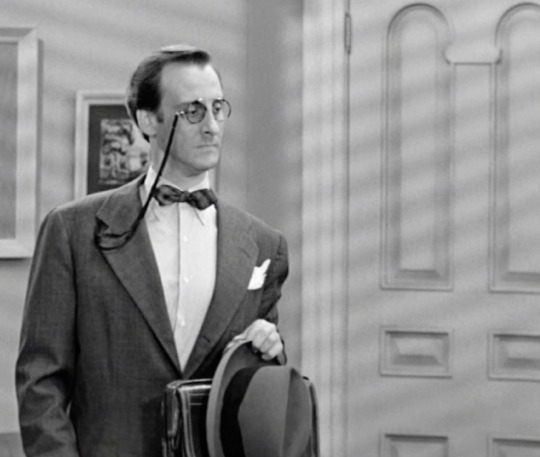
Hans Conried (Adrian LaHoya, Costume Designer) first co-starred with Lucille Ball in The Big Street (1942). He then appeared on “I Love Lucy” as used furniture man Dan Jenkins in “Redecorating” (ILL S2;E8) and later that same season as Percy Livermore in “Lucy Hires an English Tutor” (ILL S2;E13) – both in 1952. The following year he began an association with Disney by voicing Captain Hook in Peter Pan. On “The Lucy Show” he played Professor Gitterman in “Lucy’s Barbershop Quartet” (TLS S1;E19) and in “Lucy Plays Cleopatra” (TLS S2;E1). He was probably best known as Uncle Tonoose on “Make Room for Daddy” starring Danny Thomas, which was filmed on the Desilu lot. He joined Thomas on a season 6 episode of “Here’s Lucy” in 1973. He died in 1982 at age 64.
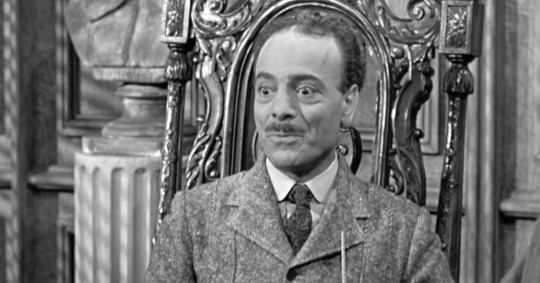
Jay Novello (Cabbie) appeared on “I Love Lucy” as superstitious Mr. Merriweather in “The Seance" (ILL S1;E7), Mario the gondolier in “The Visitor from Italy” (ILL S6;E5), and nervous Mr. Beecher in “The Sublease” (ILL S3;E31). He also appeared on two episodes of “The Lucy Show,” but Novello is probably best remembered for playing Mayor Lugatto on “McHale’s Navy” in 1965.
Beatrice, Miss Worthingill’s assistant, and the Stage Manager are played by uncredited performer.
THE EPISODE
While George is singing in the shower, Liz tells Katie the Maid not to tell him that it is opening night of the play. Liz gets a telephone call from Mrs. Worthingill, director of the play, to remind her that Adrian will be at her home for a costume fitting at 10am sharp! Liz is momentarily taken aback, thinking she is talking about the world famous costume designer Adrian, not Adrian La Hoya.

Adrian Adolph Greenburg (1903-1959), widely known simply as Adrian, was an American costume designer whose most famous work was for The Wizard of Oz and hundreds of Metro-Goldwyn-Mayer films such as Du Barry Was A Lady (above) starring Lucille Ball. He was usually credited onscreen with the phrase "Gowns by Adrian".
George comes down to breakfast and says that he has the day off because the bank is closed. Liz needs an excuse to get George out of the house for her fitting. She tells George she’s sick.
LIZ: “Look at my tongue. There’s a coat I.J. Fox would be proud of!”
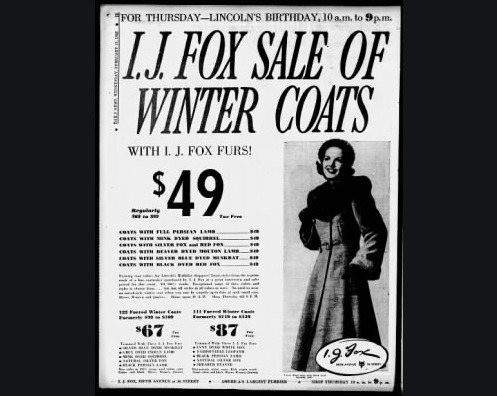
I.J. Fox is one of the nation’s leading furriers. The company is based in Boston, where in 1934 they built a historic art deco store on Washington Street.
George then thinks Liz might be expecting a baby. George decides to go golfing, only if Liz will promise to call the doctor.
Later, Katie answers the doorbell. It is Adrian the costumer (Hans Conried). George comes home unexpectedly and sees Liz wearing a bustle and thinks that she is swollen and assumes Adrian is the doctor.
GEORGE: “What’s wrong with my wife?”
ADRIAN: “Nothing. It’s not as bad as it looks. All I have to do is to take few inches off of her hips and tighten the droop in her back. Her peplum is dragging.”
Confusion reigns with the costumer and George talking at cross purposes about Liz’s condition / costume. George leaves the house and learns from Adrian’s waiting cabbie that he’s not a doctor, but a costumer, and that Liz is in the play. George is suspicious of Adrian’s integrity with his wife.
The Cabbie says that his wife was having a weekly Monday night rendezvous with a man at the Laundromat.
GEORGE: “What did you do?”
CABBIE: “I bought her a Benidx. Now I don’t know where she goes on Monday nights.”

The Bendix Corporation (1924-1983) licensed their name to a line of electric clothes washing machines. The 1937 Bendix Home Laundry had a glass porthole door, a rotating drum and an electrically driven mechanical timer. The machine was able to auto-fill, wash, rinse and spin-dry. Bendix Home Appliances was later sold to Avco who sold it to Philco. Bendix was mentioned again on “My Favorite Husband” in “Television” (Jun 17, 1949).
George decides to have a talk with Miss Worthingill. George arrives just as an actor has dropped out of the play. Miss Worthingill sees George and gets an idea.
MISS WORTHINGILL: “Come in, Mr. Barrymore! That profile! That noble carriage! That resonant voice! That wavy blonde hair! Those white teeth! Those flaring nostrils! You’re gorgeous. What did you say your name was?”
GEORGE: “Cugat. George Cugat.”
MISS WORTHINGILL: “Gorgeous George!”

Miss Worthingill is referring to John Barrymore (1882-1942), born John Sidney Blyth, a stage, screen and radio actor of distinction. He was known for his dramatic flare and classic profile. She then calls George ‘Gorgeous George’ (to the delight of the audience). George Raymond Wagner (1915–63) was a wrestler known as Gorgeous George because of his blonde hair. He was mentioned on “I Love Lucy” in “Pioneer Women” (ILL S1;E25) and “Ricky’s Movie Offer” (ILL S4;E6).
George agrees to play the part on the proviso that Miss Worthingill not tell Liz that he is subbing for the ailing actor until they meet on stage.
George goes to Adrian’s costume shop with Cory for a fitting and is given a pair of skimpy tights, which he objects to wearing.
CORY: “George is allergic to tights. He was doing a quick change on the stage in college once. When called for his tights, they thought he said lights!”
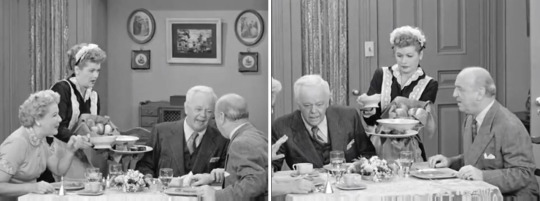
This same gag was told by Fred Mertz to Barney Kurtz in “Mertz and Kurtz” (ILL S4;E2) in 1954.
George tries on the tights and finds them tight. Adrian disagrees, saying:
ADRIAN: “The costumer is always right!”

This clever wordplay takes a moment to earn its laugh. Adrian is punning on the old business motto that “the customer is always right,” a phrase that dates back to 1909, originally coined by London retailer Harry Selfridge to assure customers that they would get good service at his store.
Adrian offers George a suit of armor, but his son has the legs as mufflers on his car. Adrian gives George the tights and a girdle to take home, just in case. When Liz leaves the room, George ducks out to get to the theatre. Liz finds the girdle and tights in George’s suit pocket and suspects marital infidelity!

Fred Mertz wore a suit of armor in a play starring Lucy in “The Celebrity Next Door” (LDCH S1;E2) starring Tallulah Bankhead. Ricky tried on a suit of armor during pre-production for Don Juan in “Hollywood at Last!” (ILL S4;E16, right).
Adrian arrives with the armor for George. To keep his identity a secret, George wears his visor down. Liz plays Lady Alice and George is Sir Edward in an unnamed costume drama.
Oops! In the previous episode, the Young Matron’s League play Liz auditioned for was a modern play titled John Loves Mary.
LIZ / LADY ALICE: “Hark! Do I hear a footfall?”
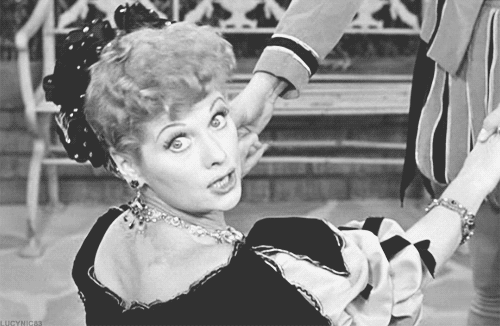
This will also be Lucy Ricardo’s first line of dialogue during her big scene in “Ricky’s Screen Test” (ILL S4;E7) for Don Juan.
Onstage in their scene, Lady Alice lifts the visor and sees it is really George! She instantly starts to have an argument in a stage whisper about the girdle she found in his pocket.
Liz throws a lit cigarette into George’s armor and extinguishes it with a seltzer bottle, ruining Miss Worthingill’s play. Later, Liz is trying to extricate George from the suit, now rusted shut and tells him if he doesn’t tell her the truth about the girdle, he will have to go live at the Smithsonian Institute.

Smithsonian Institution (dubbed ‘the Nation’s attic’) are museums located primarily in Washington DC. The Smithsonian was first mentioned in reference to Ethel’s old washing machine in “Never Do Business with Friends” (ILL S2;E31) and will be mentioned again in reference to the antique Cadillac that Fred buys for the trip to Hollywood in “Getting Ready” (ILL S4;E11). A portrait of Lucille Ball is part of the Smithsonian Portrait Gallery.
Liz and George kiss and make-up and the episode ends!
#My Favorite Husband#Lucille Ball#Richard Denning Ruth Perrott#Bea Benadaret#Smithsonian#I Love Lucy#Selfridge#Adrian#Barrymore#gorgeous george#Bendix#IJ Fox#Jay Novello#Hans Conried#John Hiestand#Bob LeMond
1 note
·
View note
Text
United States Mint announces design for 2020 Women’s Suffrage Centennial silver dollar
Hover to zoom.
Washington — The United States Mint (Mint) officially announced the design for the 2020 Women’s Suffrage Centennial silver dollar, celebrating the milestone 100th anniversary of the ratification of the 19th Amendment. Line art of the design is available here. This distinctive silver dollar coin marks a signature achievement in our Nation’s history.
“This coin pays homage to the 19th Amendment’s adoption, and also honors the many pioneers, activists, and foot soldiers in the movement who fought bravely and tenaciously for decades to make the amendment a reality,” said United States Mint Director David J. Ryder.
The 2020 Women’s Suffrage Centennial silver dollar is authorized by Public Law 116-71 to commemorate the ratification of the 19th Amendment to the Constitution of the United States, giving women the right to vote. Giving millions of female citizens the right to vote profoundly changed our Nation by moving it far closer to its promise of inclusion and equality. Surcharges of $10 per coin sold are authorized to be paid to the Smithsonian Institution’s American Women’s History Initiative for research and creation of exhibits and programs to highlight the history and impact of women in the United States. The surcharges will also assist in creating exhibitions and programs that recognize diverse perspectives on women’s history and contributions. The legislation authorizes the Mint to strike and issue up to 400,000 $1 silver coins.
Artistic Infusion Program artist Christina Hess designed both the obverse (heads) and reverse (tails) of the coin, which were both sculpted by United States Mint Medallic Artist Phebe Hemphill. The obverse of the coin features overlapping profiles of three distinct women. Each woman is wearing a different type of hat to symbolize the many decades the suffrage movement spanned. The figure in the foreground is wearing a cloche hat with an art deco pattern and a button with the year of the 19th Amendment’s ratification. The inscriptions LIBERTY, $1, and E PLURIBUS UNUM encircle the design.
The reverse design shows 2020 being dropped into a ballot box, styled with art deco elements to indicate the artistic style of the era. VOTES FOR WOMEN is inscribed inside a circle on the front of the box. The inscriptions UNITED STATES OF AMERICA and IN GOD WE TRUST are on the ballot box.
“The 2020 centennial of the 19th Amendment is a rare moment to celebrate the milestone in American history that made it possible for women to finally have a voice in government. It is such a pleasure to see this effort remembered through the imagery of this coin,” said Senator Marsha Blackburn, sponsor of the Senate version of the legislation. “Every woman in Congress today has the women and men of the suffrage movement to thank for our right to represent our constituents. 99 years after women gained the right to vote, I became the first woman from Tennessee to serve in the United States Senate. It is my hope that this commemorative coin will keep this history alive.”
“I was proud to lead the bicameral Women’s Suffrage Centennial Commemorative Coin Act through the House and am looking forward to seeing the designs that the U.S. Mint unveils ahead of the 100th anniversary of women winning the right to vote,” said Congresswoman Elise Stefanik, sponsor of the House version of the legislation. “One of the most vocal advocates for women’s suffrage, Elizabeth Cady Stanton, was born and raised in Johnstown, New York, and I am looking forward to celebrating the 100th anniversary of the passage of the 19th Amendment in my district next year. The majority of voters in our country are women, and it is my hope that this legislation will encourage women across the country to continue to be active participants in civic life.”
“The Smithsonian is honored to join the U.S. Mint in recognizing and celebrating American women’s history with the unveiling of this commemorative coin,” said Julissa Marenco, Assistant Secretary of the Smithsonian and a Commissioner on the Women’s Suffrage Centennial Commission. “In one of America’s most defining moments, this historic centennial offers an unparalleled opportunity to empower women — past, present, and future.”
Press release courtesy of the United States Mint.
❑
Follow us on Facebook and Twitter!








Comments
my lights just flickered again, are you thinking??? by Aimee
Feminism destroyed the garden, takes down societies and is used ... by Aimee
Jerry, I'd ask if you're really that stupid, but you're very ... by Aimee
Well, at least we will get to know what women's hat designs ... by Jerry Diekmann
This uncirculated coin has the potential to be the lowest ... by NCM Collector
Plus 3 more...
0 notes
Text
Deco Doings - January, 2023
Deco Doings – January, 2023
Winter by William Welsh, 1931. Image from Pinterest.
Happy New Year from Driving For Deco
Let’s take a look at some events to start your year in the deco way!
Nelson-Atkins Museum of Art
American Art Deco: Designing for the People, 1918-1939 (In Person Event)
Saturday, July 9, 2022 – Sunday, January 8, 2023 Nelson-Atkins Museum of Art, 4525 Oak Street, Kansas City, Missouri.
Art Deco…

View On WordPress
#1939-1940 New York World&039;s Fair#American Art Deco Designing For the People 1918-1939#Art Deco Glass#Art Deco Society of New York#Art Deco Society of Washington#Belle Kogan#Donald Deskey#Industrial Design#Nelson-Atkins Museum of Art#Norman Bel Geddes#Paul Fran#Queens Museum#Russel Wright#Sforzina Designs for a Modern America 1924-1941
4 notes
·
View notes
Link
In 1962, Daniel Patrick Moynihan, then an assistant secretary at the Labor Department, prepared a memo on the use of federal office space for President John F. Kennedy. Into this document he tucked a succinct yet deeply considered set of recommendations for the design of U.S. government buildings. These “Guiding Principles for Federal Architecture” were adopted as official policy shortly thereafter and are seen as axiomatic by American architects and planners.
Moynihan wrote that federal buildings must testify to “the dignity, enterprise, vigor, and stability of the American government.” But he was silent about which styles would best express those qualities—deliberately so. “An official style must be avoided,” he cautioned. “Design must flow from the architectural profession to the government and not vice versa.”
That flow may soon be reversed. As first reported by Architectural Record and confirmed by The New York Times, the Trump administration is considering an executive order that will direct that U.S. government buildings with budgets greater than $50 million be designed in classical and other traditional styles. A draft document retains Moynihan’s ringing phrase about “dignity, enterprise, vigor, and stability,” but stipulates that “the classical architectural style shall be the preferred and default style.” All federal courthouses and federal buildings in and around Washington, D.C., would have to follow the work of Greek and Roman architects and their emulators in subsequent centuries. The late-20th-century Brutalist and Deconstructivist styles, meanwhile, would essentially be banned from the federal projects covered by the order. The restriction would apply to renovation and expansion projects as well as new buildings.
Brutalism’s monumental concrete forms and the fractured geometries of Deconstructivism have attracted many other detractors, of course. But for the federal government to categorically discourage any architectural style is startling—and an utter misunderstanding of how architecture works.
The American Institute of Architects issued a statement saying it “strongly opposes” the move. Most architects today support using a range of styles for new buildings, as Moynihan did. But the AIA doesn’t speak for the cadre of die-hard classicists with whom the document originated. The National Civic Art Society (NCAS), a small Washington nonprofit, prioritizes the classical tradition in design and argues that contemporary architecture “has created a built environment that is degraded and dehumanizing.”
Donald Trump famously complained about the FBI’s Brutalist headquarters. But Trump, whose own tastes often run toward the garish, might otherwise seem an unlikely advocate for stately Greek- and Roman-influenced buildings. Once a fringe group, the NCAS has moved closer to Washington’s center of architectural power (such as it is) under the Trump administration. The White House recently appointed two of the group’s board members to the U.S. Commission of Fine Arts, a panel that vets the designs for all governmental and some private buildings in the District of Columbia. The commission is an expert panel, but one of the new appointees, Justin Shubow, is not an architect. Shubow, who used to work for the conservative Federalist Society, made his name campaigning against Frank Gehry’s design for the new Eisenhower Memorial. The NCAS has received funding from the philanthropist Richard Driehaus, who also funds an annual $200,000 classical architecture award through the University of Notre Dame.
A lot of classically inspired architecture—including examples built in the modern era—is in fact beautiful. Thomas Jefferson’s Rotunda at the University of Virginia and John Russell Pope’s 1941 National Gallery of Art are great buildings, both indebted to the Pantheon in Rome. But rewriting Moynihan’s guidelines to specify an official government style would be draconian. It would effectively exclude many working architects from federal projects, since even Richard Driehaus himself has admitted that very few specialize in classical design. (Those who do, of course, stand to do very well by the policy change.) And inducing nonclassical architects to add a column here or a quoin there, in order to satisfy regulations, would certainly not lead to superior design. The complex requirements of federal buildings, such as bulletproof glass for security and high standards of environmental performance, do not leave much money for highly refined details. The classical character of some buildings under this rule would be only skin-deep, says Robert Siegel, a New York architect who has designed buildings for the General Services Administration.
“Trads”—supporters of traditional forms—claim that modern architecture is foisted on the public by a willful avant-garde. Yet the Art Deco Empire State Building and Maya Lin’s raw Vietnam Veterans Memorial have become two of the country’s most beloved designs. In fact, the style war being waged on the right is rooted in a misconception. Most American architects today work in a mode you could loosely call modernist, but not as a matter of ideology. It’s simply an efficient approach to creating buildings such as high-rises and hospitals with sophisticated modern needs, using contemporary materials and technologies. The neoclassical White House was constructed out of sandstone, a material that could be sourced in Virginia and that expert stonemasons knew how to build with; today, structural steel and curtain-wall glass are available everywhere, familiar to designers and builders, and provide flexibility at a reasonable cost.
Modern architecture—which embraced the idea that “form follows function” and includes movements such as Brutalism and Deconstructionism—is itself a century old now. And crucially, classicism and modernism are not opposites; they exist on a continuum, and choosing between them is unnecessary.
The great modernist architect Louis Kahn took enormous inspiration from the classical past, elements of which appear again and again in his buildings. More recently, the British Ghanaian architect David Adjaye designed a New York skyscraper featuring rows of arched windows with bronze accents—a tribute to the architectural ornament of an earlier era. Even Shubow’s nemesis, Frank Gehry, whose Guggenheim Museum Bilbao in Spain and Walt Disney Concert Hall in Los Angeles are both defined by sweeping metal forms, has drawn repeatedly on ancient Greece and Rome in his work.
Which prompts the question: How would the government define classical and traditional, and how would it determine which buildings meet these subjective standards? Trying to adjudicate whether a design will “value beauty” and “command the admiration of the public,” as the draft document imagines, would be a farce.
The bigger question is why an ersatz Parthenon should be seen as more American than a Gothic Revival church, or a Southwestern pueblo, or a street of shotgun houses on the Gulf Coast. This directive would flatten and warp the rich architectural heritage of our country. It would also suggest that what’s most valuable in our built environment is what was codified by a white male elite before women could vote and black Americans had full legal rights.
Already, the effort has reduced architecture to a silly game of semiotics. But good architecture is important because it can lift our mood, inspire us to creativity or spiritual reflection, and ease our anxieties. (These effects are borne out by a growing body of research.) Style has almost nothing to do with the qualities of architecture that really matter: scale, proportion, light, texture, the flow of spaces, and environmental sustainability.
A classicism mandate would signal to architects that innovation and progress are subversive, and to the public that a retread of the past is safer than the wide-open future. Frank Lloyd Wright argued the role of architecture is the opposite. “The architect must be a prophet,” he said. “He must keep open minded and he must keep his eyes on the future … if he can’t see at least ten years ahead, don’t call him an architect.”
But why should we care what the architect of Fallingwater and the original Guggenheim Museum thought, anyway? He wasn’t a classicist.
0 notes
Text
Josephine Baker






Josephine Baker (born Freda Josephine McDonald; 3 June 1906 – 12 April 1975) was a French vedette, singer and entertainer, whose career was centered primarily in Europe, mostly in her adoptive country of France. During her early career she was renowned as a dancer, and was among the most celebrated performers to headline the lavish revues of the Folies Bergère in Paris. Her performance in the revue Un Vent de Folie in 1927 caused a sensation in Paris; her costume, consisting of only a girdle of bananas, became her most iconic image and a symbol of the jazz age and the 1920s. She was celebrated by artists and intellectuals of the era, who variously dubbed her the "Black Pearl", the "Bronze Venus", and the "Creole Goddess". Born in St. Louis, Missouri, she renounced her U.S. citizenship and became a French national after her marriage to French industrialist Jean Lion in 1937.
Baker was the first person of African descent to become a world-famous entertainer and to star in a major motion picture, the 1934 Marc Allégret film Zouzou. Baker refused to perform for segregated audiences in the United States and is noted for her contributions to the Civil Rights Movement. In 1968 she was offered unofficial leadership in the movement in the United States by Coretta Scott King, following Martin Luther King Jr.'s assassination. After thinking it over, Baker declined the offer out of concern for the welfare of her children.
She was also known for aiding the French Resistance during World War II. After the war, she was awarded the Croix de guerre by the French military, and was named a Chevalier of the Légion d'honneur by General Charles de Gaulle.
Early life
Josephine Baker was born as Freda Josephine McDonald in St. Louis, Missouri. Her mother, Carrie, was adopted in Little Rock, Arkansas in 1886 by Richard and Elvira McDonald, both of whom were former slaves of African and Native American descent. Josephine Baker's estate identifies vaudeville drummer Eddie Carson as her natural father despite evidence to the contrary. Baker's foster son Jean-Claude Baker wrote a biography on her that was published in 1993 titled Josephine: The Hungry Heart. Jean-Claude Baker did an exhaustive amount of research into the life of Josephine Baker, including the identity of her biological father. In the book, he discusses at length the circumstances surrounding Josephine Baker's birth:
Carrie McDonald and Eddie Carson had a song-and-dance act, playing wherever they could get work. When Josephine was about a year old they began to carry her onstage occasionally during their finale. She was further exposed to show business at an early age because her childhood neighborhood was home to many vaudeville theaters that doubled as movie houses. These venues included the Jazzland, Booker T. Washington, and Comet Theatres.
Josephine lived her early life at 212 Targee Street (known by some St. Louis residents as Johnson Street) in the Mill Creek Valley neighborhood of St. Louis, a racially mixed low-income neighborhood near Union Station, consisting mainly of rooming houses, brothels and apartments with no indoor plumbing. Josephine was always poorly dressed and hungry as a child, and developed street smarts playing in the railroad yards of Union Station. She had little formal education, and attended Lincoln Elementary School only through the fifth grade.
Josephine's mother married a kind but perpetually unemployed man, Arthur Martin, with whom she had a son and two more daughters. She took in laundry to wash to make ends meet, and at eight years old, Josephine began working as a live-in domestic for white families in St. Louis. One woman abused her, burning Josephine's hands when the young girl put too much soap in the laundry.
At 13, Josephine also worked as a waitress at the Old Chauffeur's Club at 3133 Pine Street. She also lived as a street child in the slums of St. Louis, sleeping in cardboard shelters, scavenging for food in garbage cans, making a living with street-corner dancing. It was at the Old Chauffeur's Club where Josephine met Willie Wells and married him the same year. However, the marriage lasted less than a year and she left Wells to join a black vaudeville group.
In Baker's teen years she struggled to have a healthy relationship with her mother, Carrie McDonald, who did not want Josephine to become an entertainer, and scolded her for not tending to Baker's second husband, Willie Baker, whom she had married in 1921 at age 15. Although she left Willie Baker when her vaudeville troupe was booked into a New York City venue and divorced him in 1925, it was during this time she began to see significant career success, and she continued to use his last name professionally for the rest of her life.
Although Baker returned after traveling with gifts and money for her mother and younger half-sister, the turmoil of the relationship with her mother pushed her to make a trip to France.
Career
Early years
Baker's street-corner dancing attracted attention, leading to her being recruited for the St. Louis Chorus vaudeville show at the age of 15. She headed to New York City during the Harlem Renaissance, performing at the Plantation Club and in the chorus of the groundbreaking and hugely successful Broadway revues Shuffle Along (1921) with Adelaide Hall and The Chocolate Dandies (1924). She performed as the last dancer in a chorus line.
Traditionally the dancer in this position performed in a comic manner, as if she were unable to remember the dance, until the encore, at which point she would perform it not only correctly but with additional complexity. Baker was billed at the time as "the highest-paid chorus girl in vaudeville".
Baker’s career began with her doing blackface comedy at local clubs; this was the "entertainment" that her mother did not approve of. Blackface performances landed Baker an opportunity to tour in Paris, which would become the place she called home until her final days.
Paris and rise to fame
Baker sailed to Paris, for a new venture, and opened in La Revue Nègre on 2 October 1925, aged 19, at the Théâtre des Champs-Élysées. In Paris, she became an instant success for her erotic dancing, and for appearing practically nude onstage. After a successful tour of Europe, she broke her contract and returned to France to star at the Folies Bergère, setting the standard for her future acts.
Baker performed the "Danse sauvage" wearing a costume consisting of a skirt made of a string of artificial bananas. Her success coincided (1925) with the Exposition des Arts Décoratifs, which gave birth to the term "Art Deco", and also with a renewal of interest in non-Western forms of art, including African. Baker represented one aspect of this fashion. In later shows in Paris, she was often accompanied on stage by her pet cheetah, "Chiquita", who was adorned with a diamond collar. The cheetah frequently escaped into the orchestra pit, where it terrorized the musicians, adding another element of excitement to the show.
After a short while, Baker was the most successful American entertainer working in France. Ernest Hemingway called her "the most sensational woman anyone ever saw."
Baker also starred in three films which found success only in Europe: the silent film Siren of the Tropics (1927), Zouzou (1934) and Princesse Tam Tam (1935). She starred in Fausse Alerte in 1940.
At this time she scored her most successful song, "J'ai deux amours" (1931). At the start of her career in France, Baker met a Sicilian former stonemason who passed himself off as a count, who persuaded her to let him manage her. Giuseppe Pepito Abatino was not only Baker’s management, but her lover as well. The two could not marry due to Baker still being married to her second husband, Willie Baker.
Under the management of Abatino, Baker's stage and public persona, as well as her singing voice, were transformed. In 1934, she took the lead in a revival of Jacques Offenbach's opera La créole, which premiered in December of that year for a six-month run at the Théâtre Marigny on the Champs-Élysées of Paris. In preparation for her performances, she went through months of training with a vocal coach. In the words of Shirley Bassey, who has cited Baker as her primary influence, "... she went from a 'petite danseuse sauvage' with a decent voice to 'la grande diva magnifique'... I swear in all my life I have never seen, and probably never shall see again, such a spectacular singer and performer."
Despite her popularity in France, Baker never attained the equivalent reputation in America. Her star turn in a 1936 revival of Ziegfeld Follies on Broadway generated less than impressive box office numbers, and later in the run, she was replaced by Gypsy Rose Lee. Time magazine referred to her as a "Negro wench...whose dancing and singing might be topped anywhere outside of Paris", while other critics said her voice was "too thin" and "dwarf-like" to fill the Winter Garden Theatre. She returned to Europe heartbroken. This contributed to Baker's becoming a legal citizen of France and giving up her American citizenship.
Baker returned to Paris in 1937, married the French industrialist Jean Lion, and became a French citizen. They were married in the French town of Crèvecœur-le-Grand, in a wedding presided over by the mayor, Jammy Schmidt.
Work during World War II
In September 1939, when France declared war on Germany in response to the invasion of Poland, Baker was recruited by Deuxième Bureau, French military intelligence, as an "honorable correspondent". Baker collected what information she could about German troop locations from officials she met at parties. She specialized in gatherings at embassies and ministries, charming people as she had always done, while gathering information. Her café-society fame enabled her to rub shoulders with those in the know, from high-ranking Japanese officials to Italian bureaucrats, and to report back what she heard. She attended parties at the Italian embassy without raising suspicions and gathered information.
When the Germans invaded France, Baker left Paris and went to the Château des Milandes, her home in the south of France. She housed friends who were eager to help the Free French effort led by Charles de Gaulle and supplied them with visas. As an entertainer, Baker had an excuse for moving around Europe, visiting neutral nations such as Portugal, as well as some in South America. She carried information for transmission to England, about airfields, harbors, and German troop concentrations in the West of France. Notes were written in invisible ink on Baker's sheet music.
Later in 1941, she and her entourage went to the French colonies in North Africa. The stated reason was Baker's health (since she was recovering from another case of pneumonia) but the real reason was to continue helping the Resistance. From a base in Morocco, she made tours of Spain. She pinned notes with the information she gathered inside her underwear (counting on her celebrity to avoid a strip search). She befriended the Pasha of Marrakech, whose support helped her through a miscarriage (the last of several). After the miscarriage, she developed an infection so severe it required a hysterectomy. The infection spread and she developed peritonitis and then septicemia. After her recovery (which she continued to fall in and out of), she started touring to entertain British, French, and American soldiers in North Africa. The Free French had no organized entertainment network for their troops, so Baker and her friends managed for the most part on their own. They allowed no civilians and charged no admission.
In Cairo, Egypt's King Farouk asked her to sing; she refused because Egypt had not recognized Free France and remained neutral. However, she offered to sing in Cairo at a celebration of honor for the ties between Free France and Egypt, and asked Farouk to preside, a subtle indication of which side his officially neutral country leaned toward.
After the war, Baker received the Croix de guerre and the Rosette de la Résistance. She was made a Chevalier of the Légion d'honneur by General Charles de Gaulle.
Baker's last marriage, to French composer and conductor Jo Bouillon, ended around the time Baker opted to adopt her 11th child. After the separation, Baker's chateau in France was foreclosed and she had to be physically removed from the property.
Later career
In 1949, a reinvented Baker returned in triumph to the Folies Bergere. Bolstered by recognition of her wartime heroics, Baker the performer assumed a new gravitas, unafraid to take on serious music or subject matter. The engagement was a rousing success, and reestablished Baker as one of Paris' preeminent entertainers. In 1951 Baker was invited back to the United States for a nightclub engagement in Miami. After winning a public battle over desegregating the club's audience, Baker followed up her sold-out run at the club with a national tour. Rave reviews and enthusiastic audiences accompanied her everywhere, climaxed by a parade in front of 100,000 people in Harlem in honor of her new title: NAACP's "Woman of the Year". Her future looked bright, with six months of bookings and promises of many more to come.
An incident at the Stork Club interrupted and overturned her plans. Baker criticized the club's unwritten policy of discouraging black patrons, then scolded columnist Walter Winchell, an old ally, for not rising to her defense. Winchell responded swiftly with a series of harsh public rebukes, including accusations of Communist sympathies (a serious charge at the time). The ensuing publicity resulted in the termination of Baker's work visa, forcing her to cancel all her engagements and return to France. It was almost a decade before U.S. officials allowed her back into the country.
In January 1966, Fidel Castro invited Baker to perform at the Teatro Musical de La Habana in Havana, Cuba, at the 7th anniversary celebrations of his revolution. Her spectacular show in April broke attendance records. In 1968, Baker visited Yugoslavia and made appearances in Belgrade and in Skopje. In her later career, Baker faced financial troubles. She commented, "Nobody wants me, they've forgotten me"; but family members encouraged her to continue performing. In 1973 she performed at Carnegie Hall to a standing ovation. The following year, she appeared in a Royal Variety Performance at the London Palladium, and then at the Monacan Red Cross Gala, celebrating her 50 years in French show business. Advancing years and exhaustion began to take their toll; she sometimes had trouble remembering lyrics, and her speeches between songs tended to ramble. She still continued to captivate audiences of all ages.
Civil rights activism
Although based in France, Baker supported the Civil Rights Movement during the 1950s. When she arrived in New York with her husband Jo, they were refused reservations at 36 hotels because of racial discrimination. She was so upset by this treatment that she wrote articles about the segregation in the United States. She also began traveling into the South. She gave a talk at Fisk University, a historically black college in Nashville, Tennessee, on "France, North Africa And The Equality Of The Races In France".
She refused to perform for segregated audiences in the United States, although she was offered $10,000 by a Miami club. (The club eventually met her demands). Her insistence on mixed audiences helped to integrate live entertainment shows in Las Vegas, Nevada. After this incident, she began receiving threatening phone calls from people claiming to be from the Ku Klux Klan but said publicly that she was not afraid of them.
In 1951, Baker made charges of racism against Sherman Billingsley's Stork Club in Manhattan, where she alleged she had been refused service. Actress Grace Kelly, who was at the club at the time, rushed over to Baker, took her by the arm and stormed out with her entire party, vowing never to return (although she returned on 3 January 1956 with Prince Rainier of Monaco). The two women became close friends after the incident.
When Baker was near bankruptcy, Kelly offered her a villa and financial assistance (Kelly by then was princess consort of Rainier III of Monaco). (However, during his work on the Stork Club book, author and New York Times reporter Ralph Blumenthal was contacted by Jean-Claude Baker, one of Baker's sons. Having read a Blumenthal-written story about Leonard Bernstein's FBI file, he indicated that he had read his mother's FBI file and, using comparison of the file to the tapes, said he thought the Stork Club incident was overblown.)
Baker worked with the NAACP. Her reputation as a crusader grew to such an extent that the NAACP had Sunday, May 20, 1951 declared "Josephine Baker Day". She was presented with life membership with the NAACP by Nobel Peace Prize winner Dr. Ralph Bunche. The honor she was paid spurred her to further her crusading efforts with the "Save Willie McGee" rally after he was convicted of the 1948 beating death of a furniture shop owner in Trenton, New Jersey. As Baker became increasingly regarded as controversial, many blacks began to shun her, fearing that her reputation would hurt their cause.
In 1963, she spoke at the March on Washington at the side of Rev. Martin Luther King, Jr. Baker was the only official female speaker. While wearing her Free French uniform emblazoned with her medal of the Légion d'honneur, she introduced the "Negro Women for Civil Rights." Rosa Parks and Daisy Bates were among those she acknowledged, and both gave brief speeches.
After King's assassination, his widow Coretta Scott King approached Baker in the Netherlands to ask if she would take her husband's place as leader of the Civil Rights Movement. After many days of thinking it over, Baker declined, saying her children were "too young to lose their mother".
Personal life
Relationships
Baker was married four times. Her adopted son Jean-Claude Baker described his mother as bisexual, having had relationships with men and women, including the Mexican artist Frida Kahlo. Her first marriage was to American Pullman porter Willie Wells when she was 13 years old. The marriage was reportedly very unhappy and the couple divorced a short time later. Another short-lived marriage followed to Willie Baker in 1921; she retained Baker's last name because her career began taking off during that time, and it was the name by which she became best known. In 1925 she began an extramarital relationship with the Belgian novelist Georges Simenon.
In 1937, Baker married Frenchman Jean Lion. She became a French citizen and became a permanent expatriate. She and Lion separated in 1940. Lion died in 1957 of Spanish influenza. She married French composer and conductor Jo Bouillon in 1947, but their union also ended in divorce. She was later involved for a time with the artist Robert Brady, but they never married.
Children
During Baker's work with the Civil Rights Movement, she began adopting children, forming a family she often referred to as "The Rainbow Tribe". Baker wanted to prove that "children of different ethnicities and religions could still be brothers." She often took the children with her cross-country, and when they were at Château des Milandes, she arranged tours so visitors could walk the grounds and see how natural and happy the children in "The Rainbow Tribe" were. Baker raised two daughters, French-born Marianne and Moroccan-born Stellina, and 10 sons, Korean-born Jeannot (or Janot), Japanese-born Akio, Colombian-born Luis, Finnish-born Jari (now Jarry), French-born Jean-Claude and Noël, Israeli-born Moïse, Algerian-born Brahim, Ivorian-born Koffi, and Venezuelan-born Mara. For some time, Baker lived with her children and an enormous staff in the château in Dordogne, France, with her fourth husband, Jo Bouillon.
Later years and death
In her later years, Baker converted to Roman Catholicism. In 1968, Baker lost her castle due to unpaid debts; afterwards Princess Grace offered her an apartment in Roquebrune, near Monaco.
Baker was back on stage at the Olympia in Paris in 1968, in Belgrade in 1973, at Carnegie Hall in 1973, at the Royal Variety Performance at the London Palladium in 1974, and at the Gala du Cirque in Paris in 1974. On 8 April 1975, Baker starred in a retrospective revue at the Bobino in Paris, Joséphine à Bobino 1975, celebrating her 50 years in show business. The revue, financed notably by Prince Rainier, Princess Grace, and Jacqueline Kennedy Onassis, opened to rave reviews. Demand for seating was such that fold-out chairs had to be added to accommodate spectators. The opening night audience included Sophia Loren, Mick Jagger, Shirley Bassey, Diana Ross, and Liza Minnelli.
Four days later, Baker was found lying peacefully in her bed surrounded by newspapers with glowing reviews of her performance. She was in a coma after suffering a cerebral hemorrhage. She was taken to Pitié-Salpêtrière Hospital, where she died, aged 68, on 12 April 1975.
She received a full Roman Catholic funeral that was held at L'Église de la Madeleine. The only American-born woman to receive full French military honors at her funeral, Baker's funeral was the occasion of a huge procession. After a family service at Saint-Charles Church in Monte Carlo, Baker was interred at Monaco's Cimetière de Monaco.
Legacy
Place Joséphine Baker in the Montparnasse Quarter of Paris was named in her honor. She has also been inducted into the St. Louis Walk of Fame, and on 29 March 1995, into the Hall of Famous Missourians. In 2015 she was inducted into the Legacy Walk. The Piscine Joséphine Baker is a swimming pool along the banks of the Seine in Paris named for her.
Writing in the on-line BBC magazine in late 2014, Darren Royston, historical dance teacher at RADA credited Baker with being the Beyoncé of her day, and bringing the Charleston to Britain.
Two of Baker's sons, Jean-Claude and Jarry (Jari), grew up to go into business together, running the restaurant Chez Josephine on Theatre Row, 42nd Street, New York City. It celebrates Baker's life and works. Château des Milandes, a castle near Sarlat in the Dordogne, was Baker's home where she raised her twelve children. It is open to the public and displays her stage outfits including her banana skirt (of which there are apparently several). It also displays many family photographs and documents as well as her Legion of Honour medal. Most rooms are open for the public to walk through including bedrooms with the cots where her children slept, a huge kitchen, and a dining room where she often entertained large groups. The bathrooms were designed in art deco style but most rooms retained the French chateau style. Baker continued to influence celebrities more than a century after her birth. In a 2003 interview with USA Today, Angelina Jolie cited Baker as "a model for the multiracial, mulitnational family she was beginning to create through adoption". Beyoncé performed Baker's banana dance at the Fashion Rocks concert at Radio City Music Hall in September 2006.
Writing on the 110 anniversary of her birth, Vogue described how her 1926 "danse sauvage" in her famous banana skirt "brilliantly manipulated the white male imagination" and "radically redefined notions of race and gender through style and performance in a way that continues to echo throughout fashion and music today, from Prada to Beyoncé."
Portrayals
Baker appears in her role as a member of the French Resistance in Johannes Mario Simmel's 1960 novel, Es Muss Nicht Immer Kaviar Sein (C'est pas toujours du caviar).
A character loosely based on Baker is featured in an episode of Hogan's Heroes titled "Is General Hammerschlag Burning?", which originally aired on 18 November 1967. The character, Kumasa (played by Barbara McNair), is a chanteuse based in Paris. She later reveals herself to be Carol Dukes, a high-school classmate of Sergeant James Kinchloe (Ivan Dixon), on whom she had a secret crush.
The italo-belge francophone singer composer Salvatore Adamo pays tribute to Baker with the song "Noël Sur Les Milandes" (album Petit Bonheur – EMI 1970).
Diana Ross portrayed Baker in both her Tony Award-winning Broadway and television show An Evening with Diana Ross. When the show was made into an NBC television special entitled The Big Event: An Evening with Diana Ross, Ross again portrayed Baker.
A German submariner mimics Baker's Danse banane in the 1981 film Das Boot.
In 1986, Helen Gelzer portrayed Baker on the London stage for a limited run in the musical Josephine - "a musical version of the life and times of Josephine Baker" with book, lyrics and music by Michael Wild. The show was produced by Baker’s longtime friend Jack Hocket in conjunction with Premier Box-Office and the musical director was Paul Maguire. Gelzer also recorded a studio cast album titled Josephine.
In 1991, Baker's life story, The Josephine Baker Story, was broadcast on HBO. Lynn Whitfield portrayed Baker, and won an Emmy Award for Outstanding Lead Actress in a Miniseries or a Special—becoming the first Black actress to win the award in this category.
Artist Hassan Musa depicted Baker in a 1994 series of paintings called Who needs Bananas?
In the 1997 animated film Anastasia, Baker appears with her cheetah during the musical number "Paris Holds the Key (to Your Heart)".
In 2002, played by Karine Plantadit in Frida.
A character based on Baker (topless, wearing the famous "banana skirt") appears in the opening sequence of the 2003 animated film Les Triplettes de Belleville.
The 2004 erotic novel Scandalous by British author Angela Campion uses Baker as its heroine and is inspired by Baker's sexual exploits and later adventures in the French Resistance. In the novel, Baker, working with a fictional black Canadian lover named Drummer Thompson, foils a plot by French fascists in 1936 Paris.
Her influence upon and assistance with the careers of husband and wife dancers Carmen De Lavallade and Geoffrey Holder are discussed and illustrated in rare footage in the 2005 Linda Atkinson/Nick Doob documentary, Carmen and Geoffrey.
Beyoncé has portrayed Baker on various occasions. During the 2006 Fashion Rocks show, Knowles performed "Dejá Vu" in a revised version of the Danse banane costume. In Knowles's video for "Naughty Girl", she is seen dancing in a huge champagne glass à La Baker. In I Am... Yours: An Intimate Performance at Wynn Las Vegas, Beyonce lists Baker as an influence of a section of her live show.
In 2006, J��rôme Savary produced a musical, A La Recherche de Josephine – New Orleans for Ever (Looking for Josephine). The story revolved around the history of jazz and Baker's career.
In 2010, Keri Hilson portrayed Baker in her single "Pretty Girl Rock".
In 2011, Sonia Rolland portrayed Baker in the film Midnight in Paris.
Baker was heavily featured in the 2012 book Josephine's Incredible Shoe & The Blackpearls by Peggi Eve Anderson-Randolph.
In July 2012, Cheryl Howard opened in The Sensational Josephine Baker, written and performed by Howard and directed by Ian Streicher at the Beckett Theatre of Theatre Row on 42nd Street in New York City, just a few doors away from Chez Josephine.
In July 2013, Cush Jumbo's debut play Josephine and I premieres at the Bush Theatre, London It was re-produced in New York City at The Public Theater's Joe's Pub from 27 February to 5 April 2015.
In February 2017, Tiffany Daniels portrayed Baker in the Timeless television episode, "The Lost Generation".
In late February 2017 a new play about Baker's later years "The Last Night of Josephine Baker" by playwright Vincent Victoria opens in Houston, Texas starring Erica Young.
Film credits
Siren of the Tropics (1927)
The Woman from the Folies Bergères (1927) short subject
Zouzou (1934)
Princesse Tam Tam (1935)
Fausse alerte (1940)
Moulin Rouge (1941)
An jedem Finger zehn (1954)
Carosello del varietà (1955)
Wikipedia
8 notes
·
View notes
Text
Getting Ahead With Online Craps Tips
In today's society, there are various distractions that keep people from connecting with loved ones and locality. Hosting a Family Game Night is an effective way to attach with people.
Like the majority of the 우리카지노 players, I have purchased a connected with e-books that teach in the best online casino's winning strategies. Seeing the e-books and understand those strategies, I logon to online casino with confidence that I will win the cash. When I start utilizing the strategies mentioned in the e-books, it works! I am so glad to see my bankroll rolls up while using winnings. I start to plan and set a target to withdraw the money from my casino account to my bank profile. Every thing is work smoothly initially hence there is no played with very careful and strict following the techniques taught inside of books.
Texas Hold'em is a positional program. An element of how you bet depends on whether you need to bet early or others have to bet to be able to do. In case you're in a young position, only bet together with twenty best hands. Weight loss players bet before you do, you are able to ease up on the requirements to bet, however, if you find a raise before you bet, only call when using the twenty best hands.
If you could have arrived at an advertisement offering an online income opportunity but that advertisement or domain name are different to the goal of the website once an individual arrived, Do the job! It's a scam.
The site of infants on up to 15- and 16-year-olds are some things that always bothers me when I'm on the Strip. Numerous Las Vegas resorts and casinos, and also Web sites, will recommend a family holiday to Lasvegas. This is clearly to get more business, and is not based on real kid substance. Factors I don't recommend bringing the kids along are wide ranging. There is sexually suggestive themes and images EVERYWHERE. This particular great now adults, but is not stuff young children should visit. The kids aren't really allowed the actual world casinos, and a lot of of the shows are of the nature. Now, if is considered the bring the kids, I like to recommend the Circus Circus motel. Its got lots young children to do, and to provide an a t least the suggestive themes prevalent in the opposite casinos.
Dr. 1.S. Hankins constructed this Art Deco commercial building in 1947. Hankins was a good African American physician and civic executive. He was an active participant the actual Washington Shores development, which provided opportunities for house ownership for Orlando's African Americans.
Well then, Pittsburgh, it sure looks like it pays to play at the Rivers Gambling establishment. It is all there searching you. Makes you happy . this one more positive part of the Rivers Casino - you can go to at anytime of time or night all year long. Which is truth! Realize! Every single day of this year! So if you are sleepless in Pittsburgh get down there and try your results. You never know if design the newest winner. It takes place and Pittsburgh definitely has a winner the actual Rivers Gambling establishment. It is an entertainment giant right there in the midst about a well known city. Big city and giant winnings and what every fantastic duo it could be. A mixture this potent provides mean miracle of emergency.
0 notes
Text
Mark Angelilli
RJ Thompson
History and Theory of Graphic Design
9 April, 2019
Milton Glaser
Born in New York City, MIlton Glaser is one of the most profound graphic designers in American History. Some even view him as the epitome of graphic design on a global scale. For his education, Glaser attended High School of Music and Art. Later on at the age of twenty-two, he went on to graduate from the Cooper Union School of Art. A few years later he traveled to Italy in order to study printmaking with Giorgio Morandi, who is a well known painter and printmaker. Morandi became a face of fame due to his introspective paintings of bottles and boxes. Glaser worked alongside Morandi for a matter of two years from 1952-1953. However, it wasn’t until the following year, in 1954, in which his success would skyrocket.
It was this year that he co-founded Pushpin Studios with the help of Seymour Chwast, Edward Sorel, and Reynold Ruffins. With this team directing Pushpin Studios, together they applied a ground-breaking effect on the bearing of graphic design. Glaser would grow his reputation even more in the coming years. In 1968, Glaser, along with Klay Felker founded New York magazine. Up until the year 1977 Glaser was able to serve as the president, as well as design director. New York Magazine became the gold standard to look up to for other city magazines (“Biography”, para. 3).
Fifteen years after the founding of New York Magazine, Glaser assisted in starting another design firm. This time he partnered up with Walter Bernard. The two of them created WBMG, which is located in New York City. WBMG has designed more than 50 magazine, newspapers, and periodicals globally. The Washington Post, La Vanguardia in Barcelona, and O Globo in Rio de Janeiro have all undergone redefinition by WBMG. They have also consulted on projects with other notorious names such as The Los Angeles Times, The Boston Globe, The Dallas Times Herald, The East Hampton Star, the New York Daily News and the National Post (“Biography”, para. 6).
Glaser even started his own studio named after himself called Milton Glaser, Inc. Founded in 1974, this studio produces a broad scope of design. Milton Glaser, Inc manufactures corporate identities and produces logos, brochures, signage, and annual reports for advertising purposes. In 1990, the studio was accountable for formulating the interior design of a museum located in Manhattan’s South Street Seaport, which is named New York Unearthed. He designed the logo for Tony Kushner’s Pulitzer Prize winning play, Angels in America in 1993. Glaser’s work has not been limited to just commercial enterprises. Around the world, Glaser has had his art exhibited. The profound designer was a one-man show at the Museum of Modern Art, the Centre Georges Pompidou, the Lincoln Center Gallery, and the Houghton Gallery in New York (“Biography” para. 7).
Largely influenced from the history of art and graphic design from decades earlier, Glaser created a new design combination that involves both conceptual and intellectual ideas (Philadelphia Museum of Art, para. 1). As for his New York Film Society Poster, there’s nothing that is too flamboyant about this piece. Actually, it is quite simplistic. However, this simplicity is in no way diminishing the creativeness of the work. The clarity of the design is what makes it comprehensible. What’s being shown is a side view of people sitting in a theatre. Rather than creating realistic people, he uses basic geometric shapes. They have been composed in such a way that they are perceived as a generic human figure. As for the color scheme, he uses the primary colors of red, yellow, and blue, as well as some small green shapes. To make these colors stand out, they are placed on a black background to act as a neutralizer. Glaser does a good job of demonstrating the idea that art doesn’t have to be necessarily flashy or realistic for it to be successful. He understands that humans visualize what we see as generic shapes and forms, even though we may not notice this primarily. He forms the body using right-angled “L” shapes. The hands and the feet, from looking at a side view, are just small triangles. As for the head he used slightly warped rectangles to make it appear that the heads are glancing upwards. Simplicity doesn’t equate to elementary. Glaser exemplifies this perfectly with this design.
Yet another famous poster he has done was for the Golden Globe Award winning television show, “Mad Men.” It really has a psychedelic feel to it. Glaser utilizes of multitude of colors that just seem to all come at you at once. In the foreground, he uses the black silhouette of a man that makes it seem like the vivid colors appear more striking. The man does not give his attention to the viewers. Rather he is faced towards the design, demonstrating that he is more interested by the glamour within the life of fortune and wealth. The poster gives off a distinct aesthetic; one that yells power, seduction, corruption, business, and fame. Given the saturation of the hues, the depiction of a woman, an alcoholic beverage, and a businessman, it produces these sort of vibes for the observer.
For the Multidisciplinary Design Conference in San Francisco, Glaser designed a poster titled “Gravity Free”. The illustration depicted has a strong relationship with the title. A man seems to be tossing up his own severed head which appears to be floating in mid air gazing back at his own body. Surrounded by him are a number of birds. As we know, a bird’s ability to take flight in the air makes it seem as if it is defying gravity. Together, these two aspects of the work pander to the idea of them being unaffected by gravity, hence the title. When taking into consideration the basic laws of design, we see a good use of contrast between colors. Red and green are opposite on the color wheel meaning they compliment each other well, which makes for a visually appealing design. It is also noticeable that Glaser makes use of a gradient between the complementary colors so that they gradually fade into one another. As for the typography, he gives the lettering a touch of curvature which adds to the effect of being “gravity free, since this produces the illusion that the words are freely floating about.
In 2009, Glaser constructed a logo for the identity of the SVA Theatre. He puts a big emphasis on line quality in this piece. The constant use of lines generate the principle of repetition. The intersection of the lines also creates an implied weight and density. The base of the building where all lines intersect seems the most dense, while the top of the building is less dense because there are only the diagonal lines that are free from interference with the others.
For the last design analysis, he made a poster that sheds light on the health issue of arthritis. The typography is used as a centerline that creates symmetry, given the letter “A” on each side. Color theory is promoted well due to the use of the red-green color scheme implemented on the letter up above. Jagged line combined with the red hue a represents pain, just as the disease provides. Meanwhile, the “A” on the bottom half of the poster is smooth and is a shade of blue, which can be perceived as a more comforting color. This counteracts against the upper half of the poster.
Most importantly, as a designer Glaser was part of the movement that opposed modernism. The Pushpin Studio eagerly studied graphic design that was made in previous eras. They experimented with fine art and commercial art. This included wood-cut illustration, Art Deco, comic books, Art Nouveau and Victoriana. During the 1960’s and 1970’s, the studio earned international reputation for its innovativeness.
Works Cited
Milton Glaser | Biography, www.miltonglaser.com/milton/c:biography/#1.
Art, Philadelphia Museum of. “Milton Glaser: Design, Influence and Process.” Philadelphia Museum of Art, www.philamuseum.org/exhibitions/2001/39.html.
Britannica, The Editors of Encyclopaedia. “Giorgio Morandi.” Encyclopædia Britannica, Encyclopædia Britannica, Inc., 16 July 2018, www.britannica.com/biography/Giorgio-Morandi.
0 notes
Text
Due To The Fact That I Desired Him Back, performs My Ex-boyfriend Actually Detest Me.
Kardashian sis are actually currently facing the enhancing number of haters who really would like to see them vanish on TV courses. Curfew laws generally relate to any sort of social places, featuring structures, playgrounds and also roads. . As a traveling entertainer I have relocated in and out of New York City City a lot of times, as well as I have actually likewise resided in various spots around the metropolitan area.

While it holds true that in some cities, fresh York, there are fewer motorists are opting to get licenses to steer professional taxis and also this has influenced the earnings that urban areas and also communities produce coming from releasing these licenses, http://super-piekno.info/uwaznosc-cwiczenia-dzialaja/ the exact same can easily certainly not be actually claimed for every single city as well as town.
5. Sometimes you will certainly feel as if you are actually being nourished a lot of information or being given way too many meals choices in the grocery store, and also steady damaging headlines on the show monitors and also in the papers make a considerable amount of stress to lots of people daily.
The settlement deal that expanded around Ft Orange was produced private in 1652 and also relabelled Beverwyck, or town of the beaver." Complying with the surrender of Fort Orange to the English in 1664, the urban area's label was transformed to recognize the Fight it out of York and also Albany.
Other bodies that assisted to entirely apply racial discrimination in United States community consist of housing, zoning and also insurance devices that rated Blacks as well as Hispanics to less desirable component of city, a political unit that marketed and elected coldly racist prospects that criticized the sufferers of bigotry for their position in culture, a healthcare device that refuted folks of color service, exercised partition, as well as still today conducts its research studies typically of European-Americans, as well as a body of crafts as well as literature that represented and bolstered a prejudiced American society.
If you would certainly just like additional details on the record of Washington Area Park, you might like my audio strolling scenic tour, which takes you with the playground and around its boundary. Of the Inside, National Park Company, Maintenance Aid Division, Technical Preservation Services.
You can also effortlessly talk to the on the web travel bureau, who likewise offer the low-cost The big apple vacation package deals. The modern Religion of the Order of the Poor Clares as it appears today although it was actually actually integrated in 1607. Proceedings: Event Modern Construction in East Africa Around Freedom", 27th-29th July 2005, Dar es Salaam, Tanzania.
The Urban area of Venice is actually soaked in long background and also most uncommon location, and also although this post is an overview to receiving the absolute most away from a tourist check out, that history as well as geography are actually crucial to the main reason why a lot of group here every year.
Conservation Innovation Dossier 2. Eindhoven: Docomomo International, Eindhoven Educational Institution of Innovation. Each of those cities has something wonderful to recommend it, and also they don't constantly turn up on the "best" provides people organize. ICADS is actually a global partnership of fine art deco societies that operates to market the apprecia- tion as well as maintenance of craft deco functions by enlightening the general public and also via cooperation and also shared help.Under the Council Home is actually Swap Arcade, with its own charming glass roof, housing shops like Storehouse, Karen Millen, Kookai & Kaliko, and additionally the Tourist Relevant information Center - a good location to get a chart to direct you for the rest of the day.In the colonial age, the city of Nyc was actually typically confined to the place south these days's Town hall. It is actually the area's earliest existing congregation still in its authentic kind although it had some additions integrated in 1701. Westerners were actually then, as well as I imagine still are, regarded with curiousity by the regional populace due to the fact that there are not a a great deal of all of them strolling the roads, also in the Old City.
0 notes